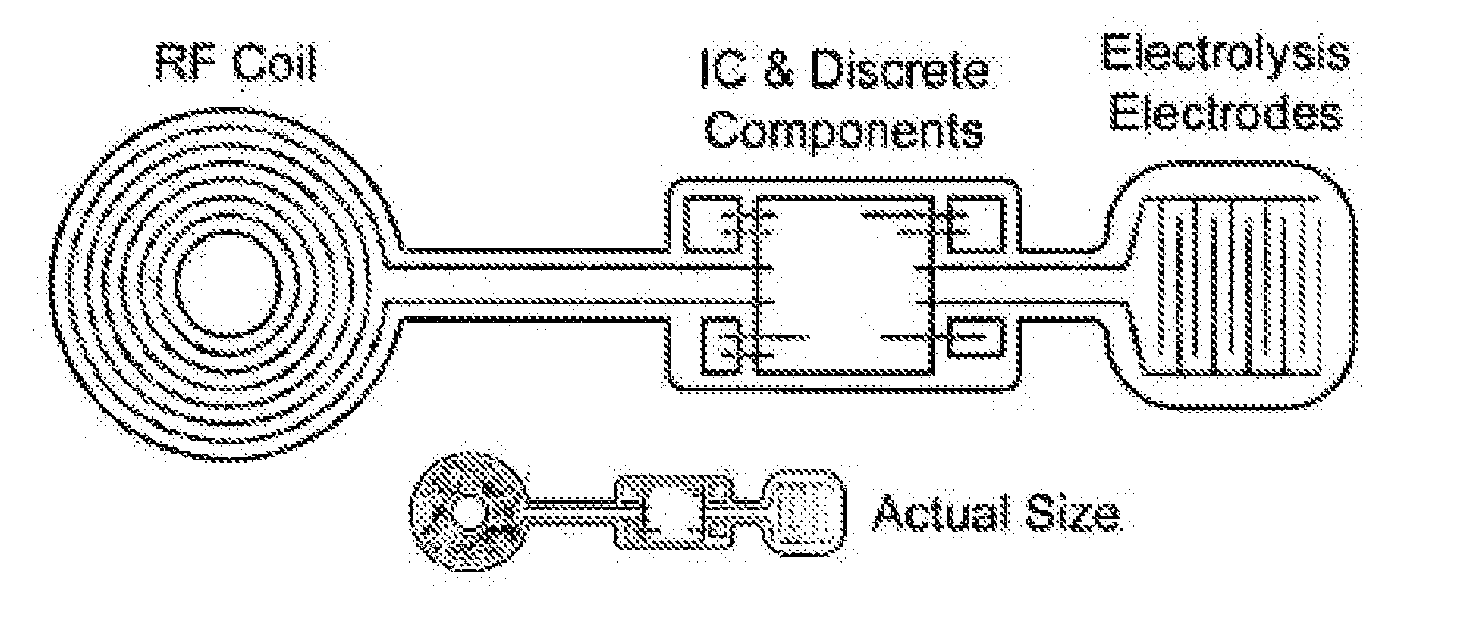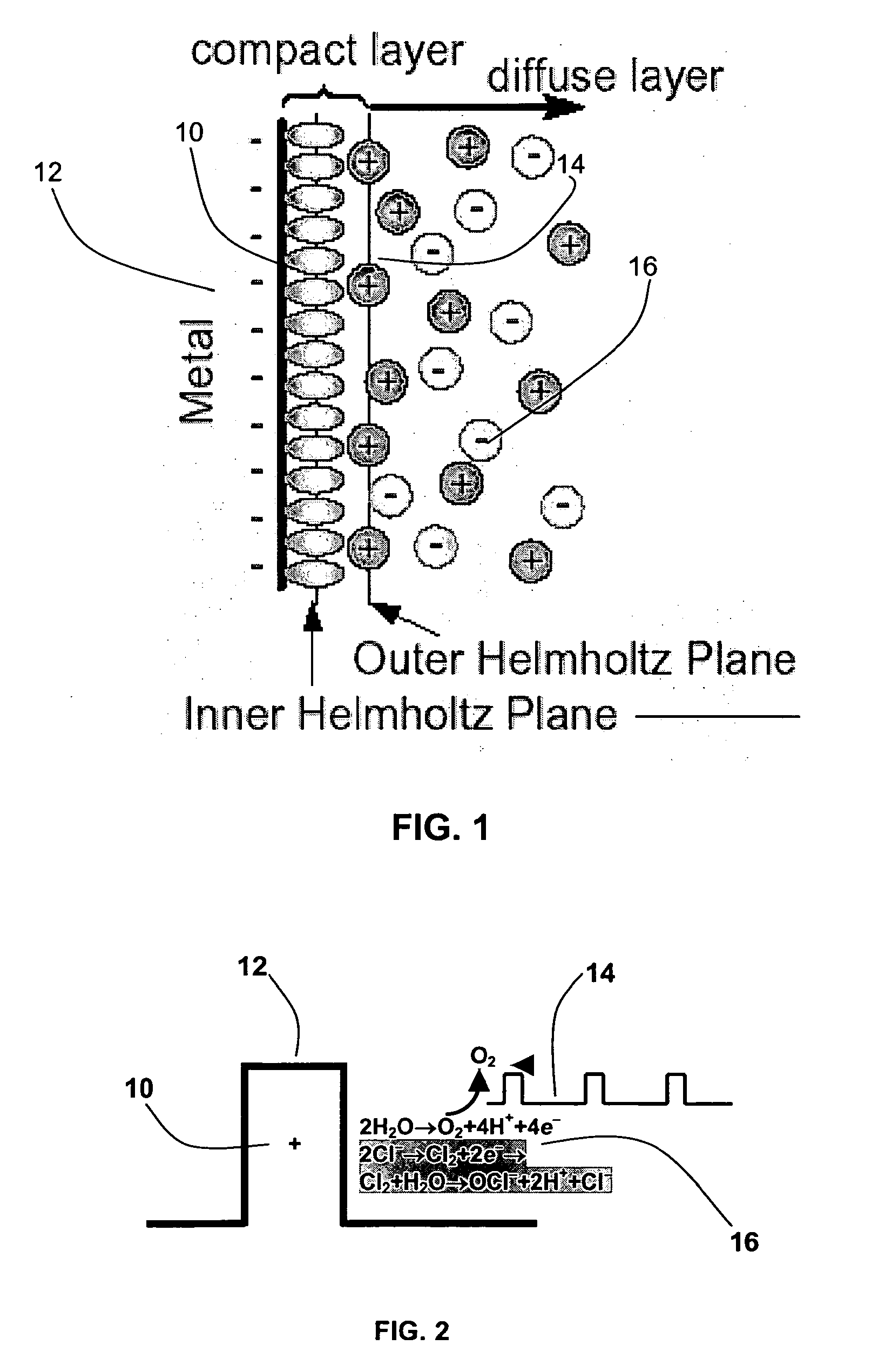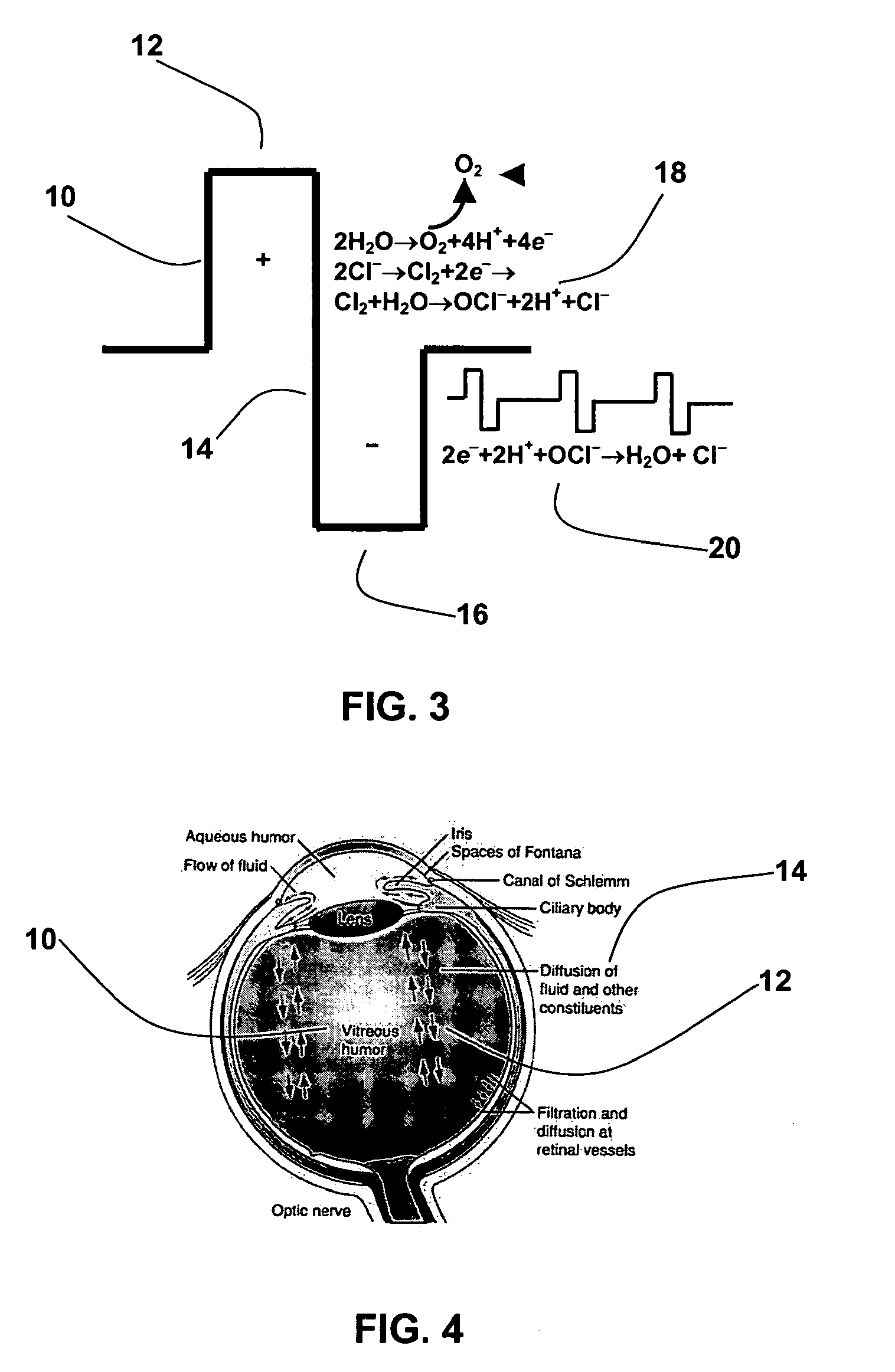Method and apparatus for treating ischemic diseases
a technology for ischemic diseases and apparatuses, applied in the field of methods and an apparatus for the treatment of ischemic diseases, can solve the problems of ischemia of retinal and choroidal tissues, affecting the circulatory system of the retina, and affecting the treatment effect of the eye, so as to achieve precise and controlled effects, advantageous for eye treatmen
- Summary
- Abstract
- Description
- Claims
- Application Information
AI Technical Summary
Benefits of technology
Problems solved by technology
Method used
Image
Examples
example i
[0075]FIG. 1 is an illustration of the structure of the electric double layer at the metal electrolyte interface. The aqueous region 10 immediately surrounding electrode 12 has a lower chloride ion concentration than that of the bulk aqueous phase 16. The concentration of chloride ions increases with distance from the electrode surface until it reaches the bulk value. Chloride ion concentration at the outer Helmholtz plane 14 has an intermediate value.
[0076]FIG. 2 illustrates the injection of positive charge 10 into the electrode. If the duration 12 of the pulse is less than the characteristic kinetic time constant for the movement of chloride ions to the surface of the electrode, water will be primarily oxidized to molecular oxygen at the anode while avoiding excessive formation of free chlorine. This is illustrated by the first equation 16 of FIG. 2, 2H2O→O2+4H++4e−. Chlorine gas, if formed, immediately reacts with water to form hypochlorite ions and hypochlorous acid. These equat...
example ii
[0078]The preferential formation of oxygen over free chlorine can be enhanced by a preparatory injection of negative charge immediately followed by the injection of Faradaic positive charge for the production of oxygen. The formation of a higher absolute value of negative potential will contribute to the further depletion of chloride ions in the immediate proximity of the metal electrolyte interface. This will have the beneficial effect of lengthening the allowable pulse duration prior to the onset of free chlorine formation.
example iii
[0079]Another method to reduce the formation of free chlorine is illustrated in FIG. 3. Following the formation of oxygen by positive charge injection 10 for duration 12, unwanted hypochlorite ions may form as illustrated by reactions 18. An immediate negative reversal pulse 14 for duration 16 will reduce the hypochlorite / hypochlorous acid back to chloride ions, illustrated by reaction 20, 2e−+2H++OCl−→H2O+Cl−.
PUM
 Login to View More
Login to View More Abstract
Description
Claims
Application Information
 Login to View More
Login to View More - R&D
- Intellectual Property
- Life Sciences
- Materials
- Tech Scout
- Unparalleled Data Quality
- Higher Quality Content
- 60% Fewer Hallucinations
Browse by: Latest US Patents, China's latest patents, Technical Efficacy Thesaurus, Application Domain, Technology Topic, Popular Technical Reports.
© 2025 PatSnap. All rights reserved.Legal|Privacy policy|Modern Slavery Act Transparency Statement|Sitemap|About US| Contact US: help@patsnap.com



